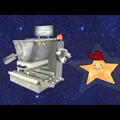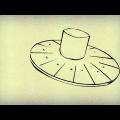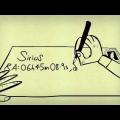- Gaia Data Release 3 videos
- Gaia Early Data Release 3 videos
- Gaia in one minute
- Max Planck Institute for Astronomy animations
- 60 Second Adventures in Astronomy cartoons
- Gaia film
- Gaia videos
- Science videos
- ESA media websites
- Gaia Mission app
- Gaia Archive Visualisation Service gallery
- Gaia Sky 3D visualization software
- Google Chrome 100,000 Stars visualization
- Gaia cut-out model
Gaia Data Release 3 videos
Videos demonstrating Gaia Early Data Release 3 data can be found at https://www.cosmos.esa.int/web/gaia/data-release-3 . Gaia DR3 videos and images are also available from ESA's website: Gaia images and Gaia videos.
Gaia Early Data Release 3 videos
Gaia Early Data Release 3 Question and Answer videos: https://www.cosmos.esa.int/web/gaia/edr3-questions-answers
Videos demonstrating Gaia Early Data Release 3 data can be found at https://www.cosmos.esa.int/web/gaia/edr3-stories
Gaia in one minute
A series of six cartoons about Gaia. The first four cartoons listed below were created by Angel Eye Media and the Gaia team in Cambridge. The other cartoons two were produced for Gaia by the Open University as episodes of "60 Second Adventures in Astronomy" series.
Why we need Gaia | What's the big deal about Gaia?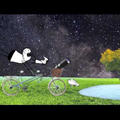 Just how do you go about creating a 3D map of a galaxy? Just how do you go about creating a 3D map of a galaxy?Watch cartoon What's the big deal about Gaia? |
How do we benefit from space? Cool and exciting science? Big deal! What's the pay-off for me? Cool and exciting science? Big deal! What's the pay-off for me?Watch cartoon How do we benefit from space? | Can I be part of Gaia?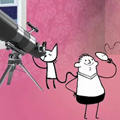 Find out how you can get involved in Gaia and contribute to new and exciting discoveries in our Galaxy and beyond… Find out how you can get involved in Gaia and contribute to new and exciting discoveries in our Galaxy and beyond…Watch cartoon Can I be part of Gaia? |
Gaia and the Killer Asteroids | Taking a Galactic Census |
Max Planck Institute for Astronomy animations
If we want to understand our own origins, then we need to understand the chemistry of stars.
Find out more by watching these two cartoons created by Angel Eye Media for M. Bergemann's Stellar Spectroscopy Research Group at Max Planck Institute for Astronomy, Heidelberg in collaboration with the Institute of Astronomy, Cambridge.
 Why am I like a star?
Why am I like a star?
We’re all made of stardust. Watch cartoon Why am I like a star?
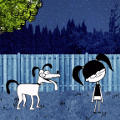 What are stars made of?
What are stars made of?
What might you be able to find about the stars just by examining their light? Watch cartoon What are stars made of?
60 Second Adventures in Astronomy
A series of 14 one-minute cartoons, created by the Open University, explaining selected astronomical topics. The last two cartoons, Gaia and the Killer Asteroids and Taking a Galactic Census, listed above in "Gaia in one minute section", were developed for Gaia. The other 12 cartoons in the series are: The Big Bang, Supernovae, Exoplanets, A Day on Mercury, The Rotating Moon, Life on Mars, Event Horizons, Dark Matter, Dark Energy, Special Relativity, Large Hadron Collider and Black Holes. Read more.
Gaia film
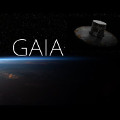
Gaia's mission: solving the celestial puzzle
A 20-minute film about Gaia - the space mission to create the largest, most-accurate, map of the Milky Way in three dimensions will revolutionise our understanding of the galaxy and the universe beyond. Watch video Gaia's mission: solving the celestial puzzle.
Gaia videos
See Gaia videos and launch videos sections of this website.
Gaia on BBC Click Live Show
Gaia was featured on Click's live show. The recording of the show can be watched on BBC iPlayer. Gaia section starts at around the 10th minute. Watch Gaia on Click Live Show.
Science videos
BBC Bitesize Space Science clips
A series of engaging videos in which Jon Chase introduces the subject of space science to Scottish Nationals and GCSE pupils. Read more about BBC Bitesize Space Science.
ESA media websites
A large selection of Gaia videos and images can be found on the following ESA's websites:
Some images and videos are also available from ESA Space Science on Flickr, and videos from ESA's channel on YouTube.
Videos of the launch are available at Gaia launch replay pages and "Launch videos" section of this website.
Gaia in the sky
Images of Gaia on its way to L2 point taken in response to DPAC call to "Take a picture of Gaia".
Gaia Archive Visualisation Service gallery
A range of resources for use in presentations of GDR1 data can be downloaded from the Gaia Archive Visualisation Service gallery (http://www.sim.ul.pt/gaia/dr1/gallery/ ). They include:
- Images showing integrated GDR1 source brightness and source density maps (all-sky and selected regions).
- All-sky maps in Hierarchical Progressive Survey (HiPS) format for viewing with Aladin or other software supporting HiPS (the maps are based on a HEALPIX grid with NSIDE=8192).
- FITS images of some regions. Contours or other overlays and manipulations for analysis or presentation purposes can be done with DS9, IRAF, Python and other software.
- Large format images for dome projection. Large 16384x8192-pixel all-sky panoramas in a Cartesian plane projection, suitable for use in modern digital planetaria.
Gaia Sky 3D visualization software
Gaia Sky is a real-time, 3D, open source astronomy visualization software that runs on Windows, Linux and OS X. It is developed by the Gaia group at the Astronomisches Rechen-Institut (ARI) at the Centre for Astronomy of Heidelberg University. The release accompanying the Gaia Data Release 1 was built with TGAS (Tycho-Gaia Astrometric Solution, see Gaia Data Release 1) catalogue.
A Virtual Reality version of Gaia Sky, Gaia Sky VR, is available. Gaia Sky VR runs on multiple headsets and operating systems thanks to Valve's OpenVR.
Gaia Mission app
University of Barcelona has developed a mobile app for iPhone, iPad, and iPod touch. The app allows you to explore the satellite, and learn about the mission and its science. The app is available for download from iTunes.
The Gaia app for Android devices is now also available for download from Google Play. Download Gaia app for Android devices.
Google Chrome 100,000 Stars visualization
100,000 Stars is an interactive visualization of 100,000 stars in the solar neighbourhood. The application uses data from three sources: Hipparcos, Yale Bright Star Catalog, and Gliese/Jahreiss Catalog. It is a Chrome Experiment developed by the Google Data Arts Team. You can try the visualization at http://stars.chromeexperiments.com/. More information about the application can be found at https://experiments.withgoogle.com/chrome/100000-stars and https://www.html5rocks.com/en/tutorials/casestudies/100000stars/.
Gaia cut-out model
Make a paper model of Gaia. Download the instructions (PDF, 815 KB). Copyright 2014 – John Jogerst. (Not for commercial use; for personal or educational use only.)
Page last updated: 19 June 2023

